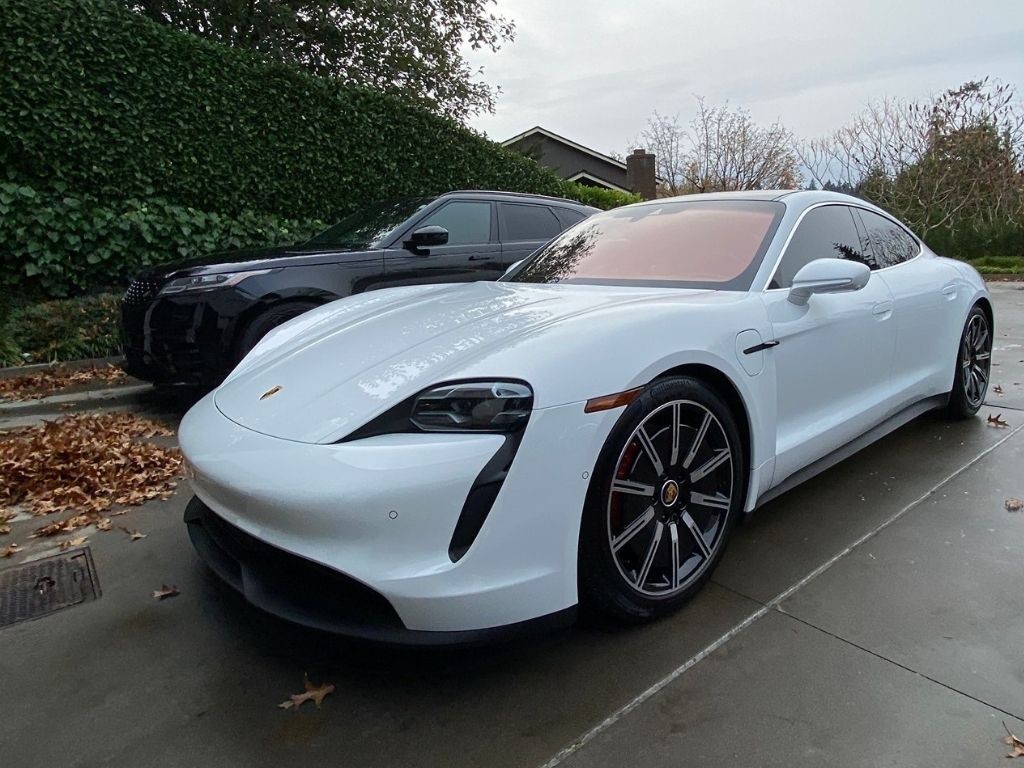Rust is the nemesis of every car owner. This corrosive process not only diminishes your vehicle’s aesthetic appeal but also compromises its structural integrity, leading to costly repairs and decreased lifespan. Whether you’re a seasoned car enthusiast or a daily driver, understanding how to stop car rust is crucial for maintaining your vehicle’s value and safety. This guide provides you with expert insights and actionable steps to prevent, manage, and eliminate rust, ensuring your car remains in top condition for years to come.
Understanding Car Rust: The Silent Destroyer
Rust, scientifically known as iron oxide, is the result of an electrochemical reaction. It occurs when iron or iron alloys, like the steel used in car bodies, are exposed to oxygen and moisture. This seemingly simple process can have devastating consequences for your vehicle.
What Triggers Rust Formation in Cars?
Several factors contribute to the acceleration of rust in cars:
- Moisture: Water, humidity, and even condensation are primary catalysts for rust. Areas prone to water accumulation, like wheel wells, undercarriage, and crevices, are particularly vulnerable.
- Road Salt and Debris: In colder climates, road salt used for de-icing is a major culprit. Salt accelerates the rusting process significantly. Similarly, dirt, grime, and road debris trap moisture and promote corrosion.
- Acid Rain and Pollutants: Acidic rain and airborne pollutants contain chemicals that can react with car paint and metal, weakening protective layers and initiating rust.
- Scratches and Chips: Even minor paint scratches or chips expose the bare metal underneath, making these areas prime starting points for rust.
The Devastating Impact of Rust on Your Car
Rust is more than just a cosmetic issue; it’s a structural threat that can severely impact your car’s health:
- Cosmetic Damage: Unsightly rust patches diminish your car’s appearance, making it look older and less cared for.
- Structural Weakness: Rust weakens metal components, compromising the car’s frame, chassis, and body panels. This can affect the vehicle’s safety and handling.
- Reduced Resale Value: A rusty car is significantly less appealing to potential buyers, leading to a substantial drop in resale value.
- Expensive Repairs: Untreated rust can spread rapidly, leading to extensive damage that requires costly repairs, including panel replacements and structural work.
- Safety Concerns: In severe cases, rust can compromise critical structural elements, impacting the car’s crashworthiness and putting occupants at risk.
 Comparison of luxury car vs standard car maintenance costs, highlighting potential expenses beyond rust damage
Comparison of luxury car vs standard car maintenance costs, highlighting potential expenses beyond rust damage
Proactive Rust Prevention: Shielding Your Car from Corrosion
Prevention is always better than cure. Implementing these proactive measures can significantly reduce the risk of rust and extend your car’s lifespan.
1. Regular Washing and Thorough Drying: The First Line of Defense
Keeping your car clean is the most fundamental step in rust prevention. Dirt, grime, and salt accumulation trap moisture and accelerate corrosion.
- Frequency: Aim to wash your car at least every two weeks, or more frequently during winter or after driving in areas with road salt.
- Technique: Use a pH-balanced car wash soap and a soft microfiber wash mitt. Pay special attention to the undercarriage, wheel wells, and lower body panels, where dirt and salt tend to accumulate.
- Drying is Key: After washing, thoroughly dry your car with microfiber towels or a chamois. Don’t let it air dry, as water spots can form and trapped moisture can lead to rust. Pay attention to door jambs, trunk and hood edges, and around trim.
2. Waxing for Enhanced Protection: Creating a Barrier Against Moisture
Applying car wax creates a protective layer over the paint, shielding it from moisture, UV rays, and pollutants that contribute to rust.
- Frequency: Wax your car every three to four months, or as recommended by the wax manufacturer.
- Wax Type: Choose a high-quality car wax – either paste, liquid, or spray wax. Carnauba wax offers excellent shine and protection. Synthetic waxes often provide longer-lasting protection.
- Application: Apply wax after washing and drying your car. Follow the product instructions carefully, ensuring even coverage and proper buffing.
3. The Benefits of Car Covers and Garage Storage: Minimizing Exposure
Limiting your car’s exposure to the elements is a highly effective way to prevent rust.
- Garage Parking: If possible, park your car in a garage or covered parking space, especially during rain, snow, or extreme weather.
- Car Covers: When garage parking isn’t available, use a breathable car cover. Ensure the cover is designed for outdoor use and fits your car snugly to prevent moisture buildup underneath. Avoid using plastic covers as they can trap moisture.
4. Immediate Scratch and Dent Repair: Preventing Rust Entry Points
Scratches and dents expose bare metal, making these areas highly susceptible to rust. Prompt repair is crucial.
- Regular Inspections: Regularly inspect your car’s paintwork for scratches, chips, and dents.
- Touch-Up Paint: For minor scratches and chips, use a touch-up paint pen that matches your car’s color code. Clean the area, apply primer if necessary, and then carefully apply the touch-up paint.
- Professional Repair: For larger scratches or dents that reach the metal, seek professional auto body repair. They can properly repair the damage and repaint the area, ensuring rust prevention.
5. Rust Inhibitor Products: Adding an Extra Layer of Defense
Rust inhibitor products provide an additional layer of protection, especially for vulnerable areas.
- Types: Rust inhibitors come in sprays, coatings, and paints. They work by creating a barrier that prevents oxygen and moisture from reaching the metal.
- Application Areas: Focus on applying rust inhibitors to the undercarriage, wheel wells, door sills, and other areas prone to rust.
- Product Selection: Choose reputable rust inhibitor brands and products specifically designed for automotive use. Follow the application instructions carefully.
6. Undercarriage Cleaning: Targeting a Rust Hotspot
The undercarriage is constantly exposed to road debris, salt, and moisture, making it a prime location for rust.
- Frequency: Clean your car’s undercarriage regularly, especially after winter driving or off-road adventures.
- Cleaning Methods: Use a pressure washer with an undercarriage attachment or visit a car wash that offers undercarriage cleaning services.
- Thoroughness: Ensure you remove all dirt, salt, and debris buildup from the undercarriage components.
7. Regular Car Inspections: Early Rust Detection is Key
Routine inspections allow you to identify and address rust issues in their early stages before they escalate.
- Visual Checks: Regularly inspect your car’s body, paying close attention to areas prone to rust, like wheel arches, rocker panels, door bottoms, and around windows and trim.
- Look for: Bubbling paint, surface rust spots (orange or brown discoloration), and any signs of corrosion.
- Early Action: If you spot any rust, address it immediately using rust removal and prevention techniques.
8. Rust Converters: Transforming Rust into a Protective Layer
Rust converters are chemical treatments that transform existing rust into a stable, paintable surface, halting further corrosion.
- Application: Remove loose rust with a wire brush, then apply the rust converter to the affected area according to the product instructions.
- Mechanism: Rust converters contain chemicals that react with iron oxide, converting it into a black, inert compound that prevents further rusting.
- Follow-Up: After applying a rust converter, you can usually prime and paint the treated area for a more aesthetically pleasing and protected finish.
9. Addressing Water Leaks Promptly: Eliminating Hidden Moisture Traps
Water leaks can lead to hidden rust in enclosed areas of your car, often going unnoticed until significant damage occurs.
- Identify Leaks: Be alert for signs of water leaks, such as damp carpets, musty odors inside the car, or water stains on interior panels.
- Common Leak Sources: Check windshield seals, sunroof drains, door seals, and weather stripping for damage or blockages.
- Professional Repair: If you suspect a water leak, take your car to a mechanic to diagnose and repair the source of the leak. Addressing leaks prevents hidden rust and potential mold growth.
10. Rust Prevention Sprays and Coatings: Targeted Protection
Rust prevention sprays and coatings offer targeted protection for specific areas, especially the undercarriage and areas prone to stone chips.
- Types: These products are available as sprays or brush-on coatings. They create a durable, protective barrier against moisture, salt, and road debris.
- Application: Apply rust prevention sprays or coatings to the undercarriage, wheel wells, frame rails, and other vulnerable areas. Follow product instructions for proper application and drying times.
- Regular Reapplication: Reapply these products periodically, especially in harsh climates, to maintain consistent protection.
Conclusion: Long-Term Rust Management for a Healthy Car
How to stop car rust is an ongoing commitment that involves regular maintenance and proactive measures. By adopting these strategies, from consistent cleaning and waxing to utilizing rust inhibitors and addressing potential leaks, you can effectively minimize rust and extend the life of your vehicle.
Regular car care, including washing, waxing, and inspections, is an investment in your car’s longevity and value. For comprehensive rust protection and car care, consider professional detailing services. Expert detailers can provide thorough cleaning, rust prevention treatments, and identify early signs of corrosion that you might miss. Mobile detailing services offer convenience, bringing expert car care directly to your location.
Contact a reputable mobile auto detailing company today to schedule a service and ensure your car remains rust-free and looking its best for years to come. Investing in rust prevention is not just about aesthetics; it’s about preserving your car’s structural integrity, safety, and long-term value.
